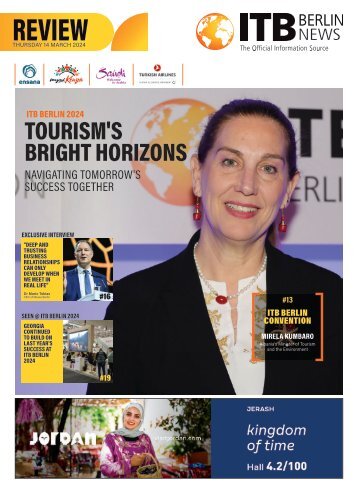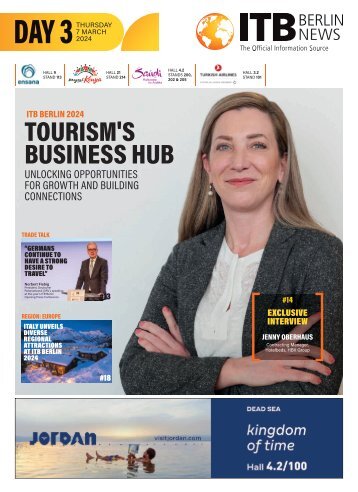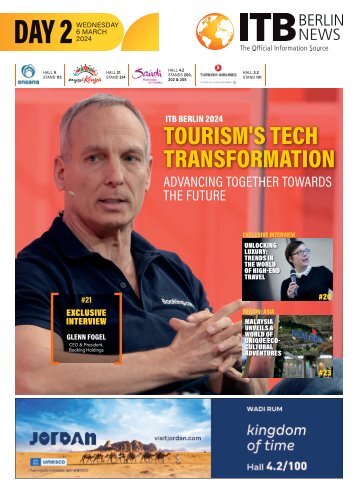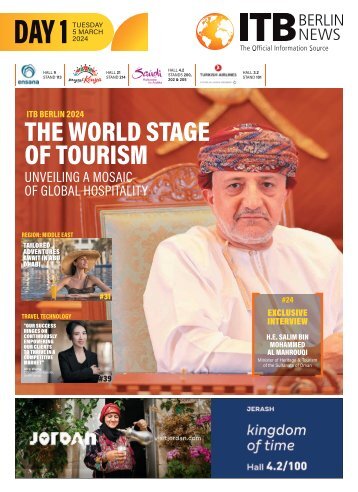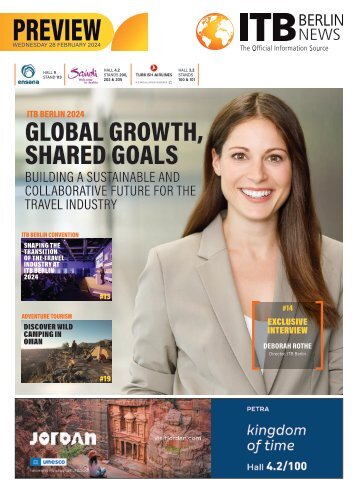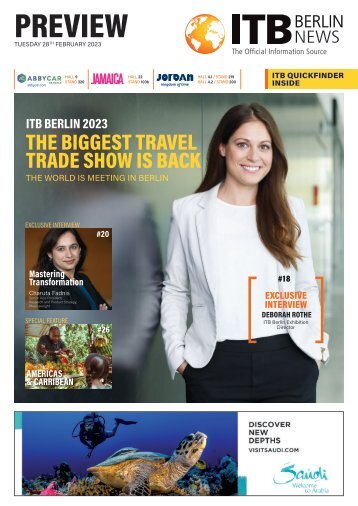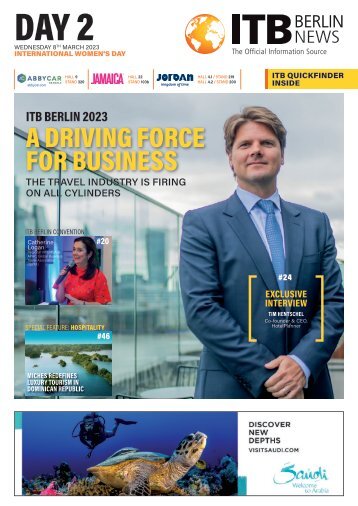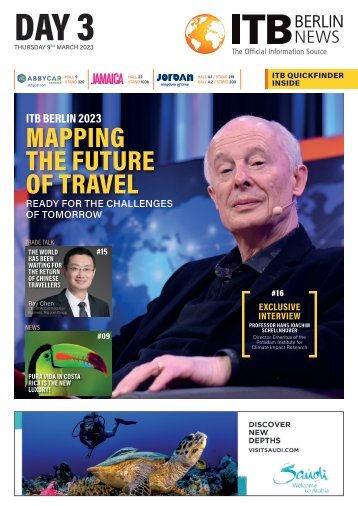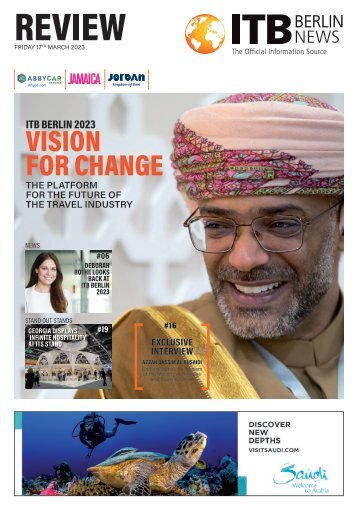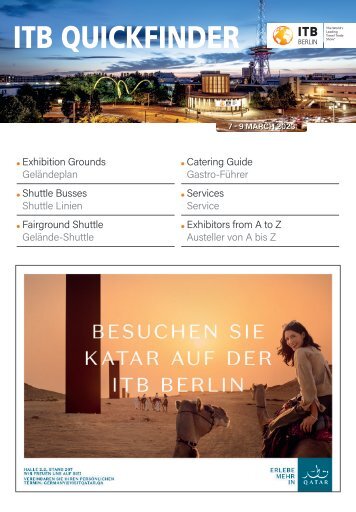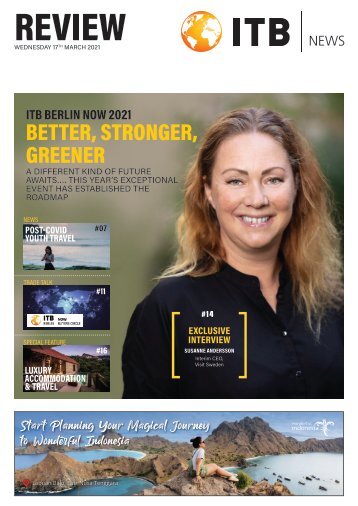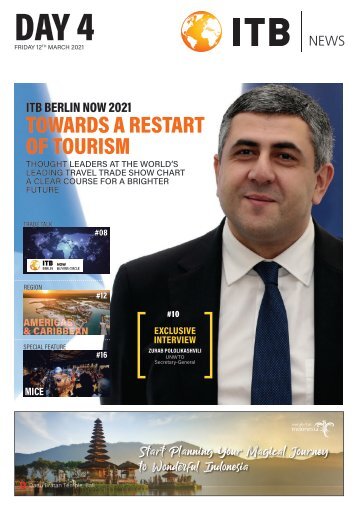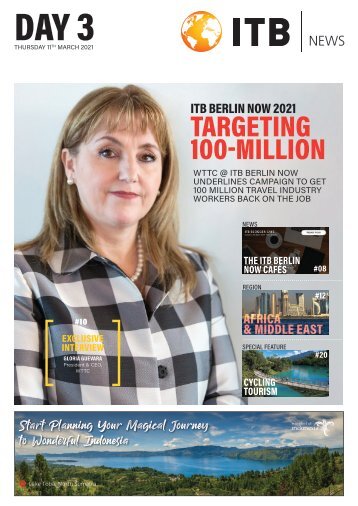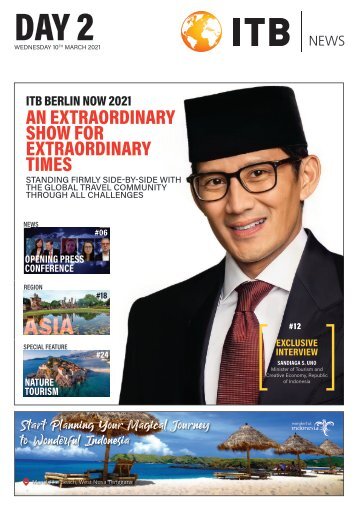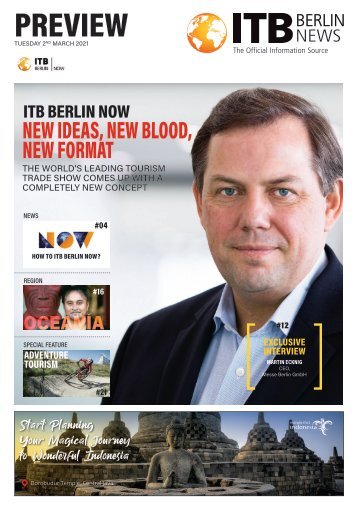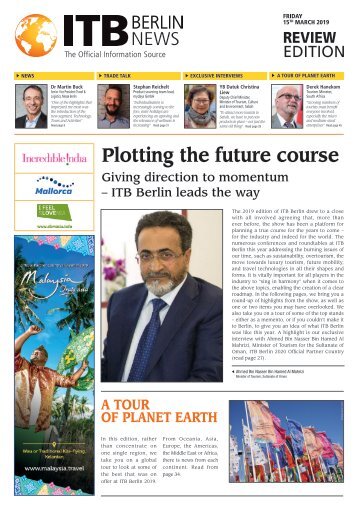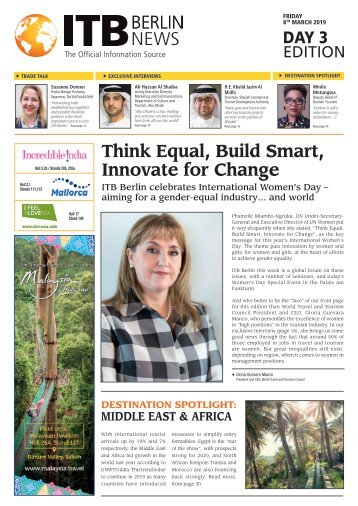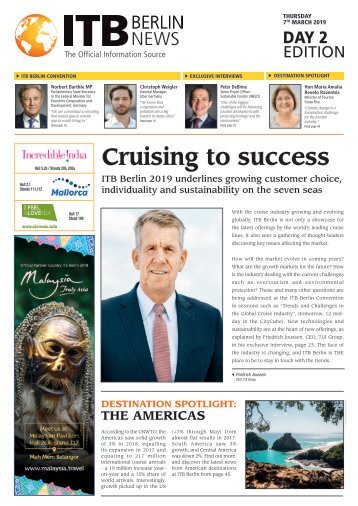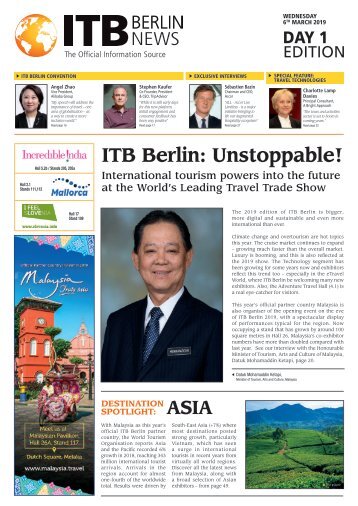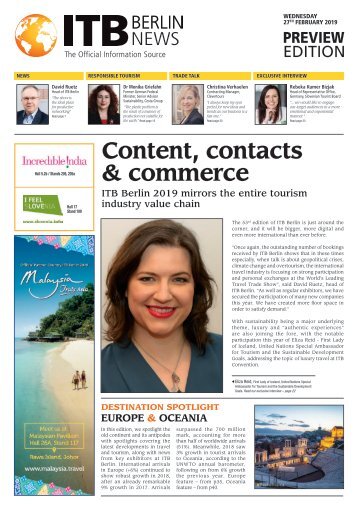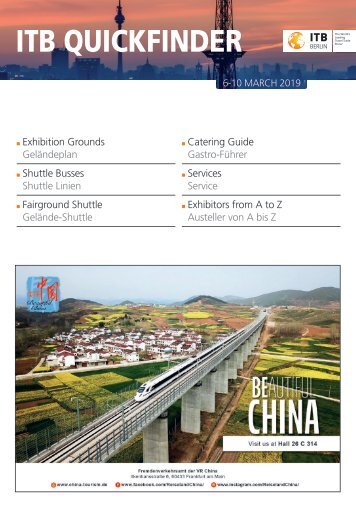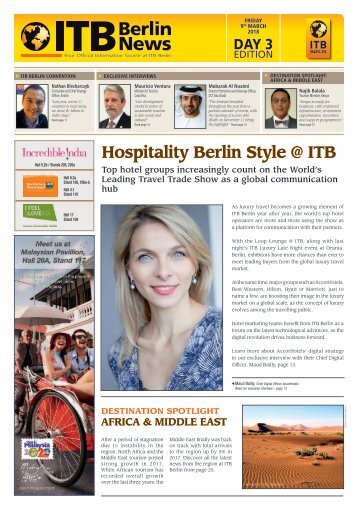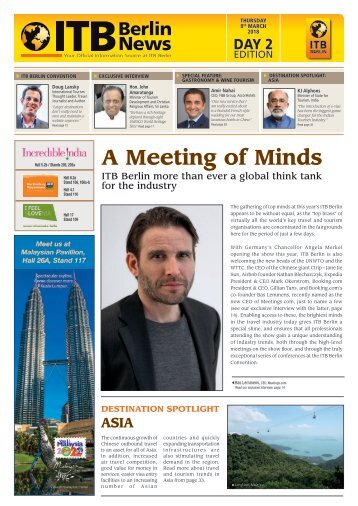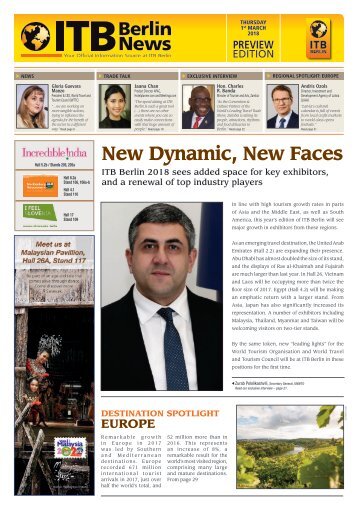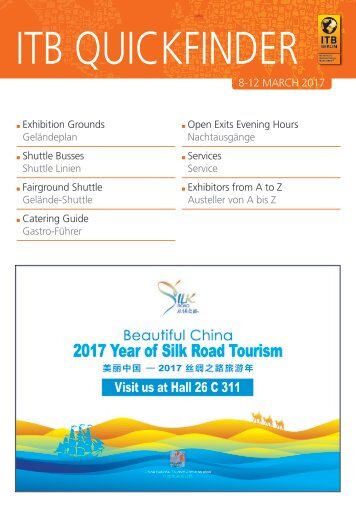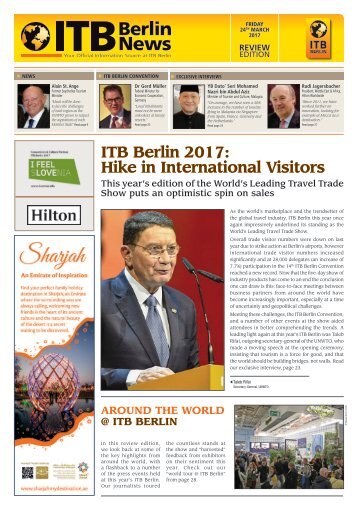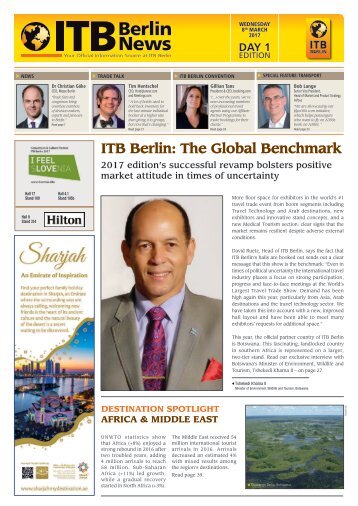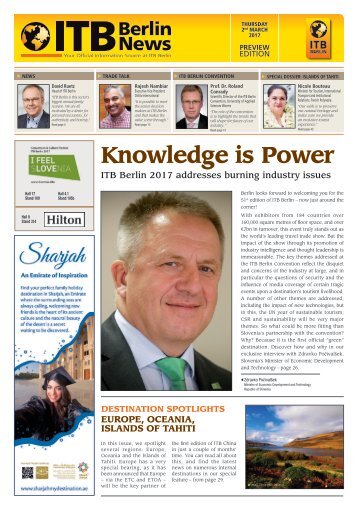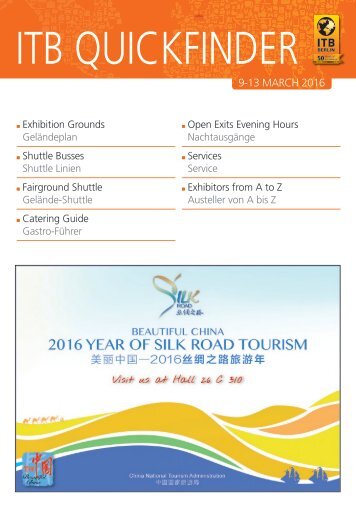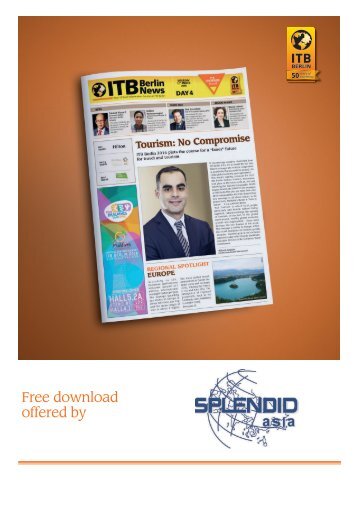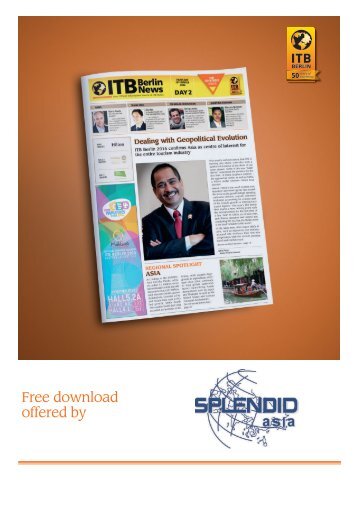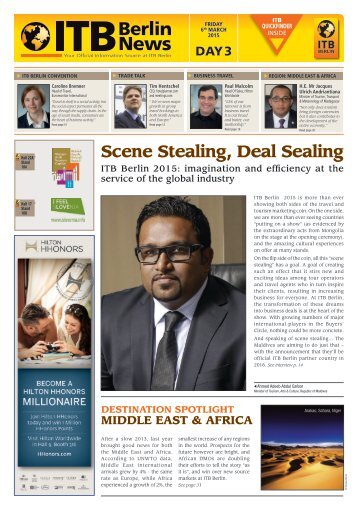
ITB Berlin News - Day 3
- Text
- Hotels
- Tourism
- Resort
- Tours
- Resorts
- Berlin
- Exhibitors
- Halle
- Tourismus
- Aussteller
20 SPECIAL FEATURE
20 SPECIAL FEATURE ADVERTORIAL CULTURAL TOURISM Central Souq Sharjah Fort 6,000 Years of History? We’ve Got it! Sharjah: a treasure trove for cultural tourists Participating in ITB Berlin for the 19 th consecutive year, for Sharjah, this year’s participation is special as the emirate city was selected as one of the 50 cities worldwide to receive an ambassador from ITB Berlin as part of the 50 th anniversary celebrations of the premier exhibition being held from March 9 to 13, 2016. Visitors to the Sharjah pavilion at ITB Berlin will get to witness the various aspects of the emirate’s culture and heritage through the performance of the traditional Ayala band and other cultural activities such as Arabic Henna designs, the art of calligraphy and the art of traditional perfume making. Sharjah is indeed the third largest emirate in the United Arab Emirates, one of the most secure and peaceful countries in the world. Overlooking the Arabian Gulf and the Gulf of Oman, Sharjah offers a blend of the old and new, and is exotic and at the same time sophisticated. The emirate has a history that goes back to more than 6,000 years. From the days of the early trading with the East, Sharjah was the most important port on the lower Arabian Gulf. With its long history and scientific reputation, Sharjah has managed to hold a prominent cultural position in the UAE and ITB BERLIN NEWS • Friday 11 th March 2016 the wider Arab region. Considering the importance of culture in the tourism fabric of the emirate, Sharjah is promoting its cultural and heritage elements among families to make it an International Cultural Hub, a key pillar of the Sharjah Tourism Vision 2021 that aims to attract more than 10 million visitors to the emirate by year 2021. WITH ITS LONG HISTORY AND SCIENTIFIC REPUTATION, SHARJAH HAS MANAGED TO HOLD A PROMINENT CULTURAL POSITION IN THE UAE AND THE WIDER ARAB REGION. In addition to its famous Islamic monuments, mosques and public parks, Sharjah boasts literary and intellectual institutions that have enriched the cultural scene. The emirate contributes to the development and promotion of culture through a number of cultural festivals, including book fairs, painting exhibitions, theatrical performances and translation and publishing activities. In recognition of Sharjah’s efforts to embrace its rich traditions and strong cultural heritage to create a modern tourism industry, the emirate was selected as the Arab Tourism Capital for 2015 by the Arab Tourism Organisation, giving a huge boost for its tourism sector and economy. The award honoured the emirate for the diversity it offers in terms of leisure and retail sector as well as for its expertise to host world class festivals throughout the year. Sharjah was earlier crowned the ‘Cultural Capital of the Arab World’ in 1998 and the Islamic Culture Capital for 2014. Standing out clearly as the cultural capital of Arab region, Sharjah is home to some of the most important cultural and heritage sites in the region. The most prominent of these is The Heart of Sharjah, which features architectural buildings, mosques and markets that bear witness to the city’s development and evolution through time. The Heart of Sharjah has been registered in the tentative list of World Heritage Sites by the United Nations Educational, Scientific and Cultural Organisation (UNESCO). The emirate has preserved its rich past in as many as 16 museums, ranging from the official residence of Sharjah’s ruling family for over 200 years to those housing art, calligraphy and Islamic artefacts. There are even museums dedicated to Sharjah key status in the region’s aviation and maritime history. Hall 22A / 104 FOLLOW THE SILK ROAD! One of the major events organized by UNWTO at ITB Berlin has been the 6th UNWTO Silk Road Ministers’ Meeting, held on the opening day of the show. The meeting brought together Ministers and high ranking officials from over 20 countries to discuss how public/private sector partnerships (PPPs) can contribute to advancing tourism on the Silk Road. The meeting focused on the valuable role of PPPs in marketing and promotion, infrastructure development, heritage management, aviation, major events and risk and crisis management. On the occasion, UNWTO launched the Silk Road Action Plan 2016/2017. In addition, the 5 th UNWTO Silk Road Tour Operators’ Forum (yesterday) was held as a means to empower inbound Silk Road tour operators to better understand, engage and work with the international travel trade. www.itb-berlin-news.com
CULTURAL TOURISM SPECIAL FEATURE 21 Malaysia’s Minister for Tourism and Culture, Dato’ Seri Mohamed Nazri Bin Abdul Aziz (left) warmly welcomes ITB Berlin News editor-in-chief Richard Barnes to the Malaysia Pavilion Experience The True Asia Getting back to nature, and local culture Culture is at the heart of Malaysia’s offering at ITB Berlin. We asked Malaysia’s Minister for Tourism and Culture, Dato’ Seri Mohamed Nazri Bin Abdul Aziz, present Our tagline for the last 20 years has been “Malaysia Truly Asia”, and this means culture is the key part of our tourism. We’re talking about people. In Malaysia, we have the natives, with very rich and diverse cultures; you have the Chinese Malaysians, with their own ancient and very particular culture; we have the Indian Malaysians – again very ancient and diverse. Other cultures that heavily influenced Malaysia over the centuries include Persian, Arabic, and British. The many different ethnicities that exist today in Malaysia have their own distinctive cultural identities, with some crossover. Here at ITB Berlin, I have brought a very small minority group from Sabah (Borneo) called the Rungus community, and I am also wearing the traditional Rungus costume. These are very tribal people, found to the north of Kota Kinabalu (eds: KK), and they are very rich in culture. They are an example of the extraordinary diversity in our culture. Please tell us more about the local cuisine… Malaysia’s culinary style is a blend of the different traditions from our Malay, Chinese, Indian, Indonesian and ethnic Bornean citizens, with some influences from Thai, Portuguese, Dutch, and British cuisines, to name just a few. This results in a symphony of flavours, making Malaysian cuisine highly complex and diverse. Among the favourites, there’s the Malaysian Chinese dish, Bak Kut Teh: meaty ribs, at its simplest cooked with garlic, dark soy sauce and a specific combination of herbs and spices which have been boiled for many hours. While it’s Chinese-based, it’s a Malaysian speciality. Then one can’t miss the delicious Sate, or the Nasi Lemak – a rice dish the locals eat every morning to give them energy in the farms and the fields. This year’s theme for Malaysia is “back to nature”… What kind of culture can people discover here? You can expect to see many cultural activities and destinations highlighted throughout the year. Part of this is though our promotion of home stays, where visitors stay with the local people, experience their culture and daily life, and this can be seen at our pavilion here at ITB Berlin this year. People can stay in longhouses by the rivers and truly experience the local culture. Traditionally, the Rungus people live in longhouses built on stilts, but the shift to modern-day living has meant that the sight of such longhouses are getting a little more rare. In Kg. Bavanggazo near Tinangol in the Kudat district, you can still experience this fascinating communal lifestyle in a purpose-built longhouse constructed entirely of traditional materials but with added modern comforts like toilets and showers. Situated in a valley about 41 kilometres south of Kudat town and 98 kilometres or two and a half hours drive from KK City, you can get a taste of real Rungus living through their food, daily rituals and music on a day trip or overnight stay. This kind of tour is sold as part of a package by our tour operators based in Borneo. Here at the show, several new packages like this have just been announced. OUR TAGLINE FOR THE LAST 20 YEARS HAS BEEN “MALAYSIA TRULY ASIA”, AND THIS MEANS CULTURE IS THE KEY PART OF OUR TOURISM Sometimes, when tourists visit remote communities around the world, they are not always made to feel welcome. What’s it like in Malaysia – for example in Sabah? Hospitality is in our DNA. We are proud to welcome foreigners, because if our guests tell us how much they’ve enjoyed Malaysia during their stay, we are very proud of that. This is why home stay is very effective, as people really experience this hospitality. Also, in Malaysia, English is the second language everywhere, so you are never in a situation where you feel you are at a loss when it comes to communicating with the local people. This makes people feel welcome. Hall 26A / 121 ITB BERLIN NEWS • Friday 11 th March 2016
- Page 1 and 2: Free download offered by
- Page 3: FRIDAY 11 th MARCH 2016 ITB QUICKFI
- Page 6: 6 NEWS Pre-Launch of VisitASEAN@50
- Page 9 and 10: NEWS 9 © Messe Berlin FROM ‘66TO
- Page 11: TRADE TALK 11 ADVERTORIAL Sunset at
- Page 14 and 15: 14 EXCLUSIVE INTERVIEW Patricia Pag
- Page 17: CULTURAL TOURISM SPECIAL FEATURE 17
- Page 24 and 25: 24 SPECIAL FEATURE BUSINESS TRAVEL
- Page 27: FAMILY DESTINATIONS & AMUSEMENT PAR
- Page 30 and 31: 30 SPECIAL FEATURE ADVERTORIAL FAMI
- Page 34 and 35: 34 REGION ADVERTORIAL AMERICAS The
- Page 36 and 37: 36 REGION AMERICAS Miami Gets All o
- Page 38 and 39: 38 REGION AMERICAS © Anton Bielous
- Page 40: 40 WHERE TO GO IN Berlin Envy Bar H
- Page 44 and 45: EXHIBITION GROUNDS GELÄNDEPLAN Hal
- Page 46 and 47: SHUTTLE BUSSES & FAIRGROUND SHUTTLE
- Page 48 and 49: SERVICES SERVICE Airports Informati
- Page 50 and 51: EXHIBITORS FROM A TO Z / AUSTELLER
- Page 52 and 53: EXHIBITORS FROM A TO Z / AUSTELLER
- Page 54 and 55: EXHIBITORS FROM A TO Z / AUSTELLER
- Page 56 and 57: EXHIBITORS FROM A TO Z / AUSTELLER
- Page 58 and 59: EXHIBITORS FROM A TO Z / AUSTELLER
- Page 60 and 61: EXHIBITORS FROM A TO Z / AUSTELLER
- Page 62 and 63: EXHIBITORS FROM A TO Z / AUSTELLER
- Page 64 and 65: EXHIBITORS FROM A TO Z / AUSTELLER
- Page 66 and 67: EXHIBITORS FROM A TO Z / AUSTELLER
- Page 68 and 69:
EXHIBITORS FROM A TO Z / AUSTELLER
- Page 70 and 71:
EXHIBITORS FROM A TO Z / AUSTELLER
- Page 72 and 73:
EXHIBITORS FROM A TO Z / AUSTELLER
Inappropriate
Loading...
Embed
Loading...
